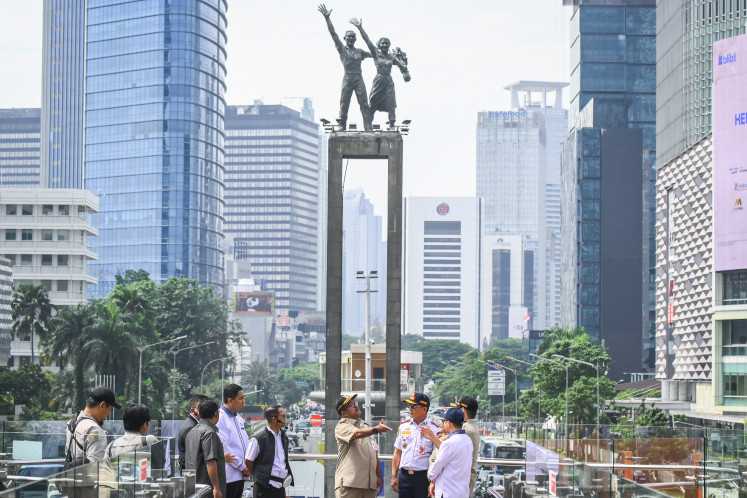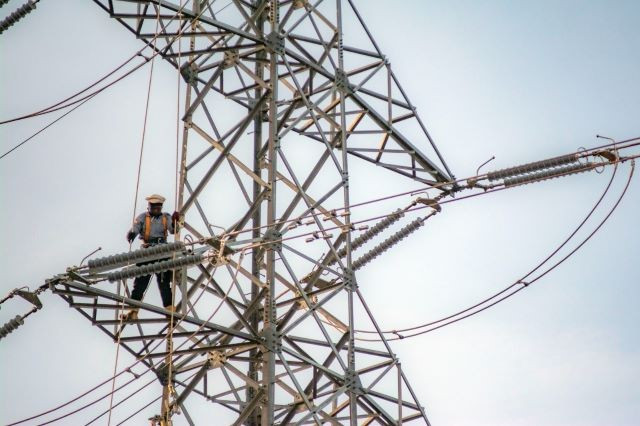ASEAN’s strategic tightrope: Staying non-aligned amid rising US-China tensions
ASEAN urgently needs to build its strategic autonomy so the region will not become a proxy to any great power.
Change text size
Gift Premium Articles
to Anyone
 Chain of strength: Laos' Prime Minister Sonexay Siphandone, Myanmar's Permanent Secretary of the Ministry of Foreign Affairs Aung Kyaw Moe, Singapore's Prime Minister Lawrence Wong, Thailand's Prime Minister Paetongtarn Shinawatra, Vietnam's Prime Minister Pham Minh Chinh, Malaysia's Prime Minister Anwar Ibrahim, Philippines' President Ferdinand Marcos Jr, Brunei's Sultan Hassanal Bolkiah, Cambodia's Prime Minister Hun Manet, President Prabowo Subianto and East Timor's Prime Minister Xanana Gusmao (from left to right) pose for a group photo on May 26 during the plenary session at the 46th Association of Southeast Asian Nations (ASEAN) Summit in Kuala Lumpur. (AFP/Jam Sta Rosa)
Chain of strength: Laos' Prime Minister Sonexay Siphandone, Myanmar's Permanent Secretary of the Ministry of Foreign Affairs Aung Kyaw Moe, Singapore's Prime Minister Lawrence Wong, Thailand's Prime Minister Paetongtarn Shinawatra, Vietnam's Prime Minister Pham Minh Chinh, Malaysia's Prime Minister Anwar Ibrahim, Philippines' President Ferdinand Marcos Jr, Brunei's Sultan Hassanal Bolkiah, Cambodia's Prime Minister Hun Manet, President Prabowo Subianto and East Timor's Prime Minister Xanana Gusmao (from left to right) pose for a group photo on May 26 during the plenary session at the 46th Association of Southeast Asian Nations (ASEAN) Summit in Kuala Lumpur. (AFP/Jam Sta Rosa)
C
hinese President Xi Jinping visited Vietnam, Malaysia and Cambodia in April. Even though the visit took place while the world still struggles to understand and cope with United States President Donald Trump’s policies of imposing tariffs worldwide, it should not be narrowly understood as China’s response to the trade war waged by the US.
The trade war only increases the significance of the visit. For China and the three Southeast Asian countries, and indeed for the whole of Southeast Asia, the importance of deepening bilateral relationships and boosting cooperation extends beyond the imperative of managing the geopolitical and geo-economic consequences. For them, it is about managing and consolidating relationships among neighbors who have experienced ups and downs in the past.
Of course, President Trump’s absurd tariff policy, which has created chaos and undermined the global trade system, served as an important strategic context for the visit. There was a clear message that leaders in three countries conveyed to President Xi. They all expressed rejection of unilateralism and reiterated their commitment to multilateralism. The same sentiments might have been expressed in most, if not all, Southeast Asian countries.
To his counterparts, President Xi also expressed the same rejection and commitment. It becomes clear that the visit underscores Beijing’s intention to position itself as a leader in free trade and globalization. By signing hundreds of cooperation documents, China demonstrates that economic cooperation between states is supposed to be a “win-win” undertaking. Throughout the visit, President Xi consistently sought to project China’s credentials as a trustworthy and reliable partner.
While President Xi’s visit first and foremost provided an opportunity to consolidate China’s bilateral ties with each of the Southeast Asian countries, it also points to the fact that the region is clearly in the crossfire between the US and China.
Once again, the region is facing a somewhat familiar strategic conundrum stemming from the intensifying rivalry between the two great powers. Both great powers put the region in a difficult position. President Trump, for example, quickly suggested that President Xi’s visit could be seen as an attempt “to screw” the US. China has also warned countries that any party negotiating trade deals with the US will face countermeasures if it harms its interests. The expectation of Southeast Asian countries that they would not have to choose between Beijing and Washington has become increasingly difficult.
Within the context of Trump’s reckless dismantling of the trade system, it would be difficult for Southeast Asian countries not to appear to be siding with China. For purely economic reasons, the interests of Southeast Asian countries are closely aligned with those of China.


















